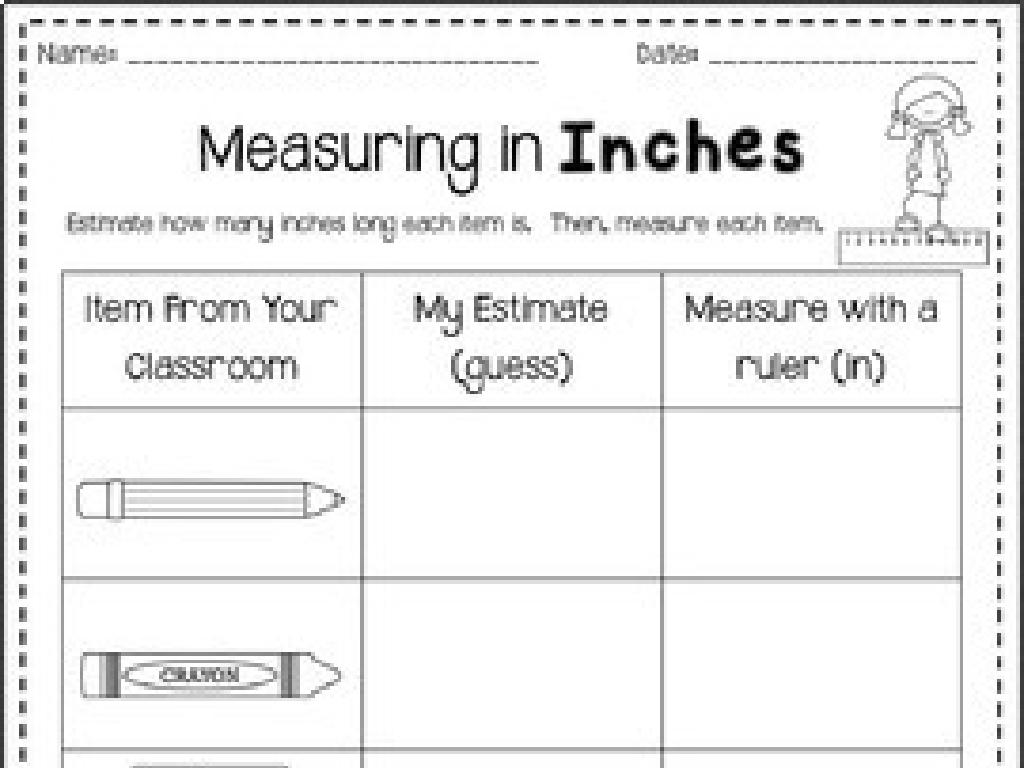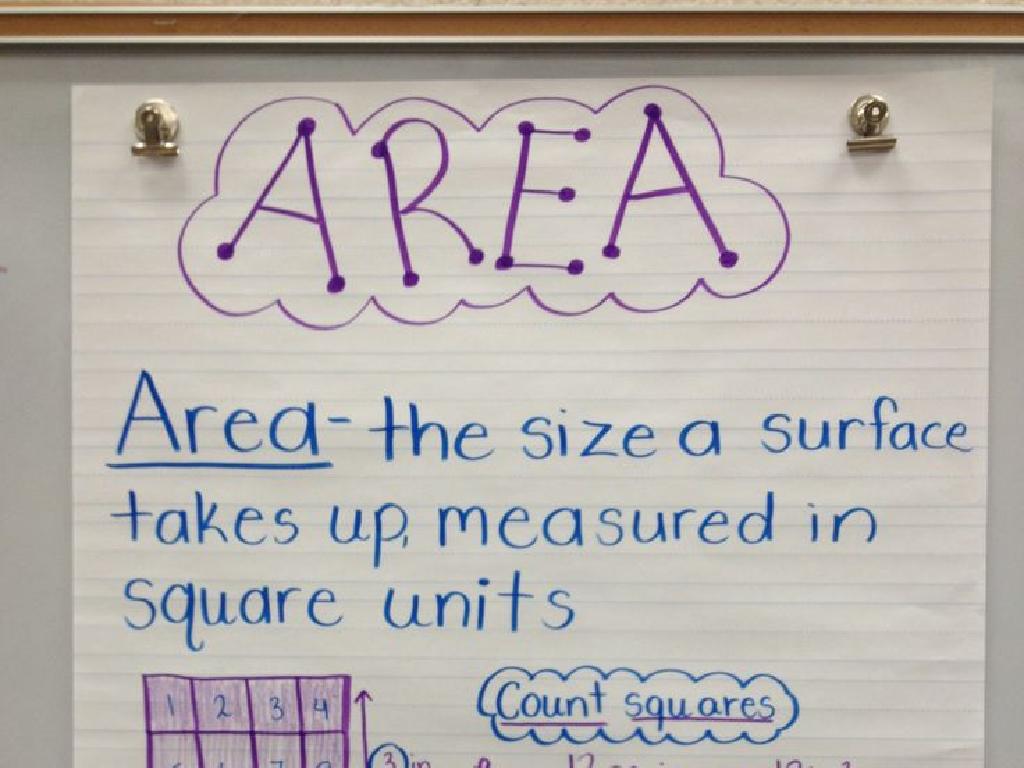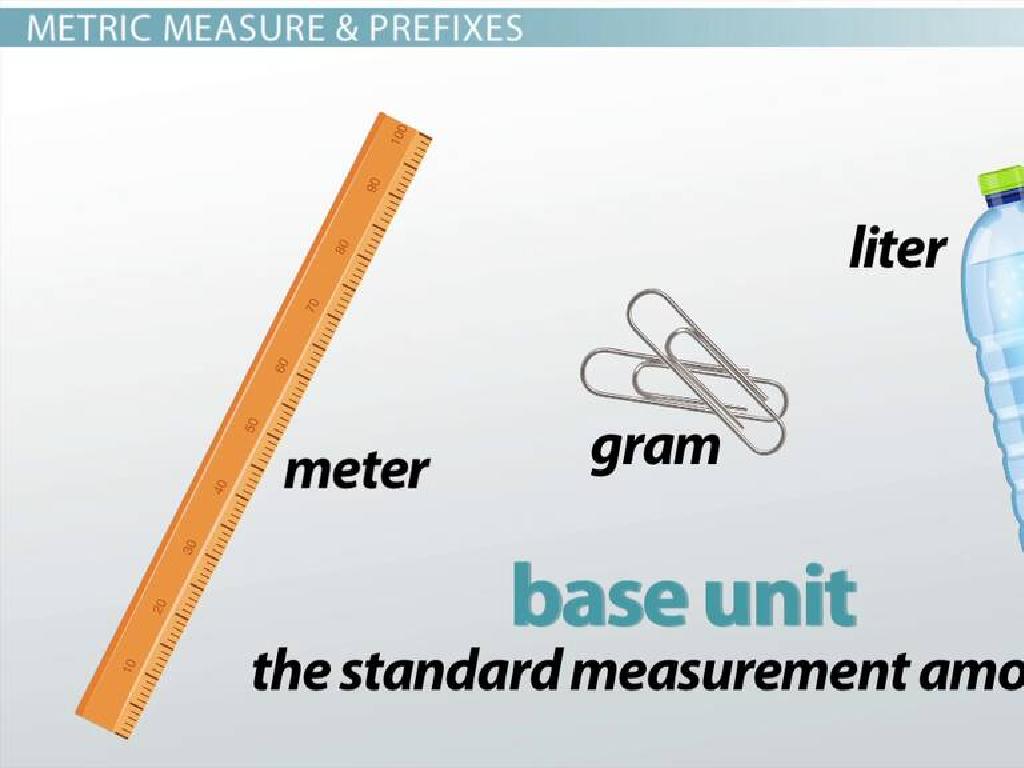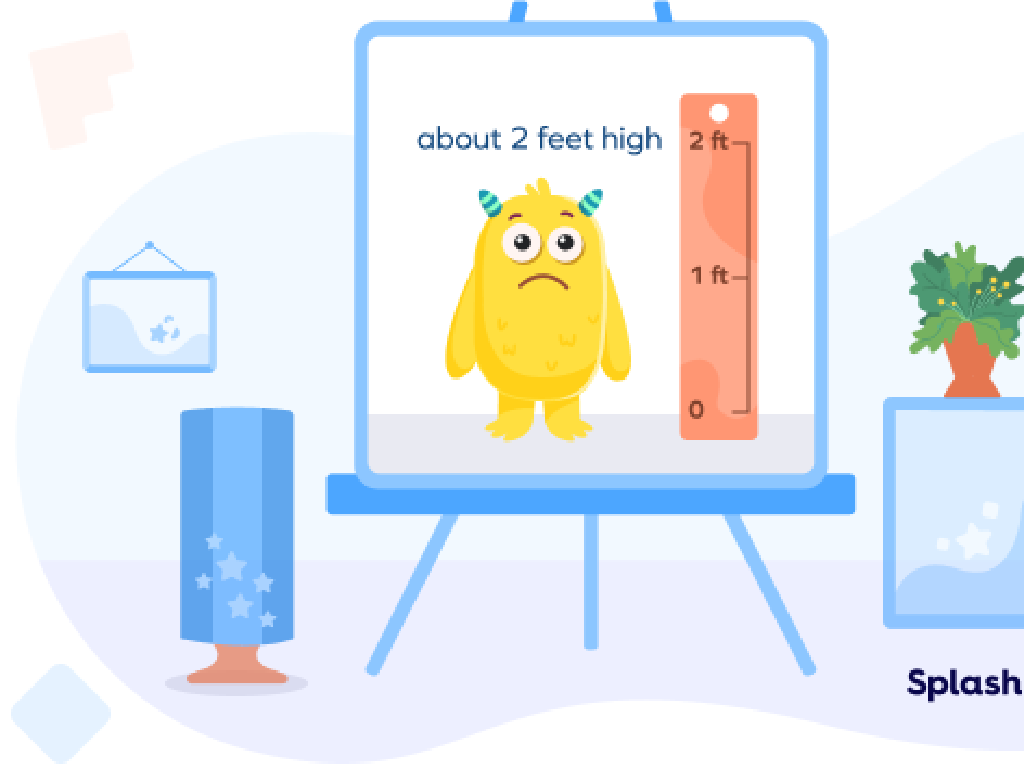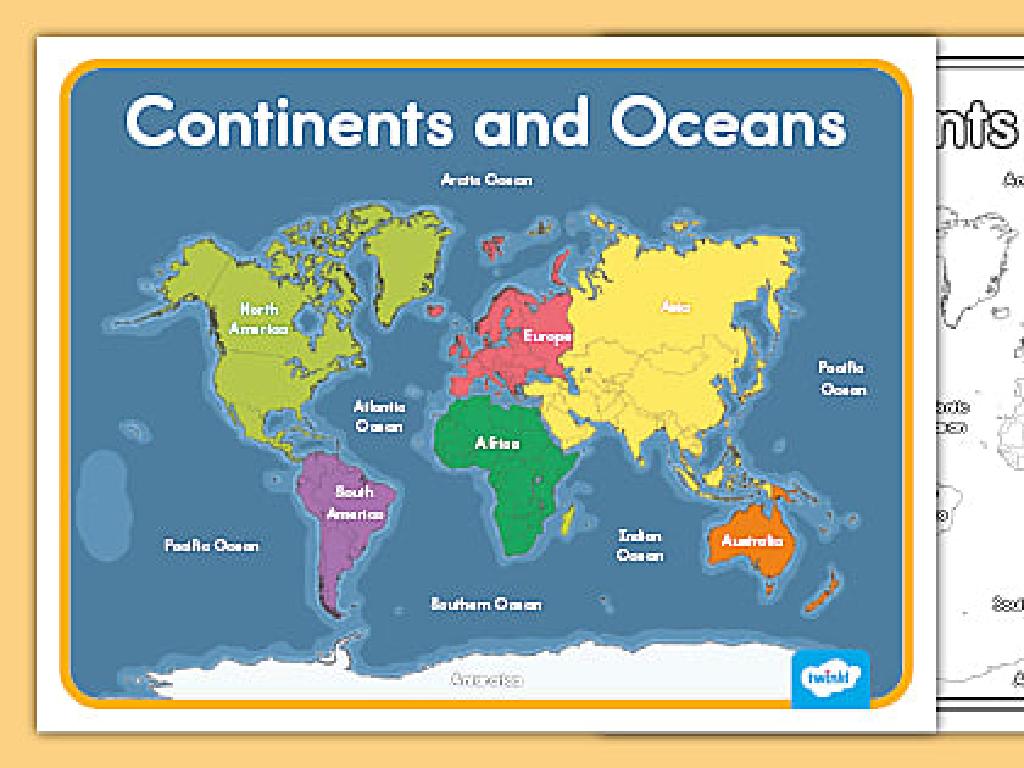Which Sentence Has The Same Meaning?
Subject: Language arts
Grade: Fourth grade
Topic: Synonyms And Antonyms
Please LOG IN to download the presentation. Access is available to registered users only.
View More Content
Exploring Synonyms and Antonyms
– Discovering words with similar meanings
– Synonyms are words that mean the same thing, like ‘happy’ and ‘joyful’.
– Finding words with opposite meanings
– Antonyms are words that have opposite meanings, such as ‘hot’ and ‘cold’.
– The role of synonyms and antonyms in language
– They help us understand text better and avoid repetition.
– Importance of knowing these word relationships
– Knowing them can improve our writing and speaking skills.
|
This slide introduces the concept of synonyms and antonyms to fourth-grade students, emphasizing their significance in language arts. Synonyms enhance vocabulary by providing alternative words that carry the same meaning, allowing for more expressive communication. Antonyms help in contrasting ideas and understanding the full spectrum of meaning. Discuss the importance of these word relationships in reading comprehension and how they can make writing more interesting. Encourage students to think of synonyms and antonyms for words they commonly use and to share examples with the class.
Exploring Synonyms
– Understanding synonyms
– Synonyms are words that mean the same thing
– Synonyms have similar meanings
– Like ‘big’ and ‘large’ or ‘fast’ and ‘quick’
– Examples: ‘happy’ and ‘joyful’
– ‘Sad’ is the same as ‘unhappy’
– Think of your own synonyms
|
This slide introduces the concept of synonyms to the students. Begin by explaining that synonyms are words that have the same or almost the same meaning, which can be used interchangeably in sentences without changing the sentence’s meaning. Provide clear examples like ‘happy’ and ‘joyful’, and ‘sad’ and ‘unhappy’ to illustrate the point. Encourage the students to actively participate by thinking of their own examples of synonyms. This will help them understand the concept better and expand their vocabulary. Make sure to acknowledge all attempts, whether correct or not, to maintain a supportive learning environment.
Exploring Antonyms
– Antonyms: Opposite meaning words
– Examples: ‘big’ vs ‘small’
– ‘Big’ is large in size, ‘small’ is little in size
– ‘light’ vs ‘dark’
– ‘Light’ means not heavy or more brightness, ‘dark’ is less light or deep in color
– Share your antonyms!
– Think of words and their opposites
|
This slide introduces the concept of antonyms to the class. Antonyms are words that have opposite meanings, such as ‘big’ and ‘small’ or ‘light’ and ‘dark’. Start by explaining the definition of antonyms and provide clear examples. Encourage the students to actively participate by asking them to come up with their own examples of antonyms. This activity will help them understand the concept and see how common it is in the English language. Make sure to praise their efforts and correct any misunderstandings. This will prepare them for more complex vocabulary exercises involving antonyms.
Identifying Synonyms in Sentences
– Understanding synonyms
– Synonyms are words with the same or similar meanings.
– Spotting synonyms using clues
– Clues like ‘such as’, ‘means’, or ‘refers to’ can hint at synonyms.
– Practice with examples
– ‘The quick bunny hopped fast’ and ‘The speedy rabbit jumped rapidly.’
– Enhancing vocabulary skills
|
This slide is aimed at teaching fourth-grade students how to identify synonyms within sentences. Begin by explaining that synonyms are words that have the same or a similar meaning. Encourage students to look for contextual clues that suggest similarity between words. Use example sentences to illustrate how synonyms can be used interchangeably while retaining the same meaning. For instance, show how ‘quick’ and ‘speedy’ or ‘hopped’ and ‘jumped’ are synonyms. Engage the class with practice sentences, asking them to find and match synonyms. This activity will help students expand their vocabulary and improve their reading comprehension skills.
Identifying Antonyms
– Antonyms are like puzzles
– Look for contrasting words
– Words that are opposite, like ‘hot’ and ‘cold’
– Practice with example sentences
– ‘The cat is large.’ vs ‘The cat is small.’
– Discover words with opposite meanings
|
This slide is aimed at helping fourth-grade students understand the concept of antonyms through the analogy of solving a puzzle. Antonyms are words with opposite meanings, and they often show contrast or opposition. Encourage students to look for clues in sentences that indicate contrasting ideas. Provide them with example sentences and ask them to identify the antonyms. For instance, compare ‘The sun is bright.’ with ‘The night is dark.’ to illustrate the concept. This activity will enhance their vocabulary and comprehension skills. Make sure to have a discussion afterward to ensure they grasp the concept and can apply it to other sentences.
Synonyms in Action
– Understanding synonyms through sentences
– Example: Two sentences with same meaning
– ‘The quick brown fox jumps over the lazy dog’ vs. ‘The fast brown fox leaps over the sluggish dog’
– Synonyms replace words without changing meaning
– ‘Quick’ is a synonym for ‘fast’, and ‘jumps’ is a synonym for ‘leaps’
– Practice finding synonyms in sentences
– Look for words in sentences that mean the same but are written differently
|
This slide aims to help students grasp the concept of synonyms by showing them how sentences can have the same meaning even when different words are used. The example provided illustrates how synonyms can be used to maintain the original meaning of a sentence. Encourage students to identify the synonyms in the example and discuss why the meaning doesn’t change. As an activity, students can work in pairs to find sentences in their favorite books and come up with alternative sentences using synonyms. This will enhance their understanding of synonyms and their ability to use them in writing.
Antonyms in Action: Opposite Meanings
– Understanding antonyms
– Antonyms are words with opposite meanings.
– Sentences with opposite meanings
– ‘The sun is bright’ vs ‘The sun is dim’.
– Example: Sun and sky descriptions
– ‘The sky is clear’ vs ‘The sky is cloudy’.
– Discussing opposite ideas
– How do these sentences make us feel different?
|
This slide aims to teach students about antonyms through the context of sentences with opposite meanings. Start by explaining that antonyms are words that have opposite meanings. Use the example provided to show how changing just a couple of words in a sentence can completely reverse its meaning. Discuss with the class how the different sentences might make them feel and why authors might choose one set of words over another to convey a particular mood or idea. Encourage the students to come up with their own examples of sentences that have opposite meanings by changing key words to their antonyms.
Class Activity: Synonym & Antonym Match-Up
– Engage in a match-up game
– Pair words with synonyms or antonyms
– Find words that mean the same or the opposite
– Collaborate with a classmate
– Work together to find matches
– Complete the match-up worksheet
– Fill in your answers on the worksheet provided
|
This activity is designed to help students understand and practice the concepts of synonyms and antonyms in a collaborative and engaging way. By working in pairs, students can discuss and decide on the relationships between words, enhancing their understanding of word meanings and nuances. Provide a worksheet with two columns of words, where students will draw lines to connect words with their synonyms or antonyms. Encourage students to use context clues and prior knowledge to make connections. As a teacher, circulate the room to assist pairs as needed and to encourage discussion. Possible variations of the activity could include using flashcards, creating a word wall, or even a digital matching game if resources allow.
Synonyms & Antonyms: Homework Challenge
– Celebrate learning synonyms & antonyms
– Homework: Find 5 synonym pairs
– Words with the same meaning, e.g., happy and joyful
– Homework: Find 5 antonym pairs
– Words with opposite meanings, e.g., hot and cold
– Share your discoveries next class
|
This slide wraps up the lesson on synonyms and antonyms, congratulating the students on their hard work. For homework, they are tasked with identifying 5 pairs of synonyms and 5 pairs of antonyms from any reading material they have access to. This exercise will help reinforce their understanding of the concept by applying it to real-world examples. Encourage them to use books, magazines, or even conversations they hear. In the next class, plan for a discussion where each student can present their findings, fostering a collaborative learning environment. Provide guidance on how to choose words and consider preparing a worksheet to help them organize their pairs.

